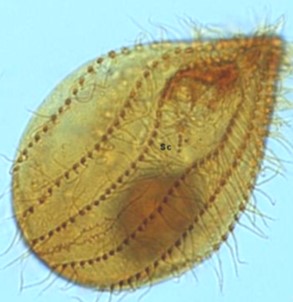Result description
Early detection of P. dicentrarchi can highly reduce mortalities in fish farms. Identification of the genotypes/serotypes involved in the disease can help to develop preventive measures. Work has been done on the design and development of molecular methods for the quantitative detection of P. dicentrarchi genotypes in fish and in assorted environmental samples. Primers for amplification of the ITS region or rDNA genes were designed. These primers facilitated the development of qPCR tests for the detection of the ciliates. Sensitivity threshold for the tests, both as the minimum number of gene copies that can be detected per reaction and the number of P. dicentrarchi cells in spiked water samples, was determined. The method was tested in sea water samples obtained from fish farms, where ciliates were concentrated by filtration. Morphological, genetic and serological methods to characterise and compare P. dicentrarchi isolates were developed to generate tools able to discriminate genotypes or phenotypes differing in virulence/pathogenicity. The result of this research was the development of a tool to identify and quantify P. dicentrarchi in sea water or in infected fish.
Addressing target audiences and expressing needs
- Expanding to more markets /finding new customers
Companies interested in the use of methods to quantify and identify P. dicentrarchi genotypes/serotypes in sea water and in fish.
- Other Actors who can help us fulfil our market potential
R&D, Technology and Innovation aspects
The tools developed need to be implemented to be used in routine work.
Result submitted to Horizon Results Platform by AGENCIA ESTATAL CONSEJO SUPERIOR DEINVESTIGACIONES CIENTIFICAS

